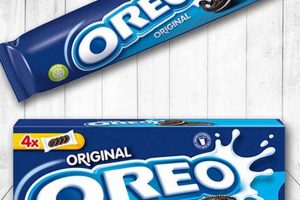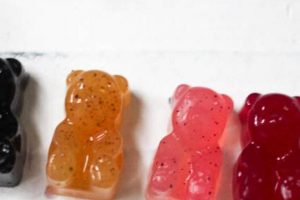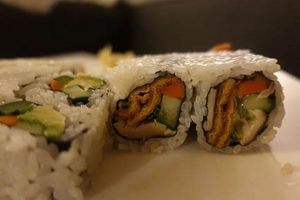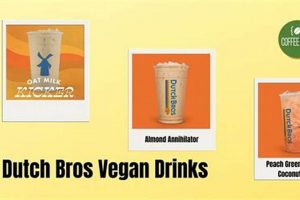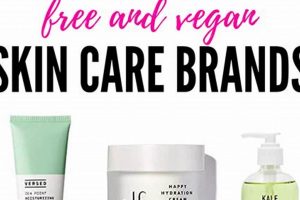Garments replicating the look and feel of traditional leather trousers, but constructed from non-animal-derived materials, are gaining traction in the fashion industry. These alternatives employ substances such as polyurethane (PU), polyvinyl chloride (PVC), or plant-based materials like pineapple leaf fiber (Piatex) and apple leather to achieve a similar aesthetic. Their rise reflects a growing awareness of ethical and environmental concerns within the textile sector.
The adoption of these alternatives provides a tangible benefit in reducing reliance on animal agriculture and its associated environmental impacts, including deforestation and greenhouse gas emissions. Historically, conventional leather production has been linked to ecologically damaging tanning processes involving harmful chemicals. These innovations offer a pathway towards more sustainable and cruelty-free apparel choices. The rise in popularity also signifies shifting consumer preferences towards consciously crafted products.
The subsequent sections will delve into the diverse materials utilized in the fabrication of these garments, analyzing their environmental footprint and durability. Further discussion will focus on the care and maintenance required to ensure longevity, as well as exploring current trends and future innovations in the realm of sustainable fashion choices within the trousers category.
Guidance for Maintaining Alternative Leather Trousers
The following provides practical advice regarding the care, maintenance, and responsible selection of trousers crafted from non-animal-derived leather alternatives.
Tip 1: Material Assessment: Before purchase, scrutinize the material composition. Polyurethane (PU) and polyvinyl chloride (PVC) are common but less environmentally friendly. Opt for plant-based alternatives like Piatex or mushroom leather for reduced ecological impact.
Tip 2: Cleaning Protocols: Adhere strictly to the manufacturer’s care instructions. Generally, hand washing with a mild detergent is preferable. Avoid harsh chemicals and bleach, as these can degrade the material’s surface.
Tip 3: Drying Procedures: Never subject the garment to high heat. Air drying, preferably in a shaded area, prevents cracking and distortion. Direct sunlight can cause fading or discoloration.
Tip 4: Conditioning Practices: Periodically apply a conditioner specifically designed for synthetic or vegan leather. This helps maintain suppleness and prevents the material from becoming brittle over time. Test the conditioner on an inconspicuous area first.
Tip 5: Storage Solutions: Store the trousers in a cool, dry place, away from direct sunlight and extreme temperatures. Use a padded hanger to prevent creasing. Avoid compressing them with heavy items in a closet or drawer.
Tip 6: Repair Considerations: Minor scuffs or scratches can sometimes be remedied with specialized repair kits available for synthetic leather. However, for significant damage, consult a professional leather or textile repair service.
Tip 7: Responsible Disposal: When the garment reaches the end of its usable life, explore options for recycling or upcycling. Check with local textile recycling centers or consider donating them to organizations that repurpose materials.
Diligent application of these guidelines ensures the longevity and sustained appearance of alternative leather trousers, contributing to a more sustainable consumption cycle.
The ensuing discussion will address the broader ethical considerations surrounding fashion choices and the impact of consumer decisions on the environment.
1. Material Composition
The material composition of alternative leather trousers directly determines their physical properties, environmental impact, and ethical implications. Understanding the components is crucial for consumers seeking durable, sustainable, and ethically produced apparel.
- Polyurethane (PU) Based Alternatives
Polyurethane is a common synthetic polymer used to mimic the look and feel of traditional leather. While PU production is generally less resource-intensive than animal leather tanning, it is derived from petroleum, a non-renewable resource. The long-term durability and biodegradability of PU-based alternatives can be limited, contributing to waste concerns at the end of the product’s life cycle. Examples include many widely available “vegan leather” trousers that prioritize affordability over sustainability.
- Polyvinyl Chloride (PVC) Based Alternatives
Polyvinyl chloride, another synthetic polymer, has historically been employed as a leather alternative. However, PVC production involves the use of chlorine and phthalates, raising environmental and health concerns. Phthalates, used to increase flexibility, have been linked to endocrine disruption. PVC is also difficult to recycle, making it a less desirable option from a sustainability perspective. Its use in alternative leather trousers is decreasing due to these concerns.
- Plant-Based Alternatives
Emerging plant-based alternatives utilize materials such as pineapple leaf fiber (Piatex), apple waste (apple leather), mushroom leather, and recycled materials. These options offer a more sustainable approach by utilizing renewable resources and diverting waste from landfills. Their production often involves lower water consumption and reduced chemical usage compared to traditional leather or synthetic alternatives. Plant-based alternatives in trousers are gaining traction among environmentally conscious brands.
- Recycled Content
Some alternative leather trousers incorporate recycled materials, such as recycled polyester or nylon, in their construction. This reduces reliance on virgin resources and can decrease the overall environmental footprint of the garment. The use of recycled materials supports circular economy principles and promotes resource efficiency. Examples include trousers made partially from recycled plastic bottles or repurposed textile waste.
In summary, the material composition of alternative leather trousers is a critical factor influencing their sustainability, durability, and ethical attributes. Consumers should carefully evaluate the materials used and prioritize options that minimize environmental impact and support responsible production practices. The selection of appropriate materials contributes to a more sustainable and ethical fashion industry.
2. Durability Assessment
The longevity and sustained integrity of trousers constructed from non-animal-derived leather alternatives are central to evaluating their economic and environmental viability. A comprehensive durability assessment considers multiple facets influencing the garment’s resistance to wear and tear over its lifespan.
- Abrasion Resistance
The material’s capacity to withstand surface wear from rubbing or friction is a primary indicator of durability. Trousers frequently encounter abrasive forces during daily activities. Materials with low abrasion resistance will exhibit premature wear, such as thinning or peeling. Polyurethane-based alternatives, depending on their formulation, may demonstrate varying degrees of abrasion resistance compared to plant-based options like pineapple leaf fiber. Evaluating abrasion resistance through standardized testing methods provides quantifiable data for comparison.
- Tear Strength
Tear strength defines the material’s ability to resist tearing when subjected to tensile stress. This is particularly relevant in areas prone to stress, such as seams and pockets. Lower tear strength renders the garment susceptible to ripping or tearing under normal use conditions. The weave or construction of the underlying fabric substrate significantly impacts tear strength, irrespective of the surface coating. Materials should undergo rigorous tear strength testing to ensure adequate performance.
- Flex Cracking Resistance
Flex cracking refers to the development of cracks or fissures in the material surface due to repeated bending or flexing. Trousers experience frequent flexing during walking, sitting, and other movements. Materials with poor flex cracking resistance will exhibit unsightly surface degradation, reducing the garment’s aesthetic appeal and functional integrity. The formulation of the surface coating and its adhesion to the underlying substrate are crucial factors influencing flex cracking resistance.
- Seam Strength and Construction
The strength and integrity of the seams are equally crucial for overall durability. Weak or poorly constructed seams will fail prematurely, leading to garment failure. Factors such as stitch density, thread type, and seam type significantly influence seam strength. Reinforcing critical stress points with additional stitching or specialized seam construction techniques enhances durability. Visual inspection and seam strength testing are essential components of a comprehensive durability assessment.
Collectively, these facets of durability assessment provide a holistic understanding of the likely lifespan and performance of alternative leather trousers. Consideration of these factors enables informed purchasing decisions and promotes the selection of garments that offer both aesthetic appeal and long-term value, mitigating the environmental impact associated with frequent replacements.
3. Ethical Sourcing
Ethical sourcing within the context of alternative leather trousers addresses the responsible procurement of raw materials and the upholding of fair labor standards throughout the production process. This consideration extends beyond the material composition itself, encompassing the social and environmental impact of manufacturing practices.
- Labor Practices and Fair Wages
The implementation of fair labor practices is paramount. This includes ensuring workers receive livable wages, work in safe conditions, and have the right to organize and collectively bargain. Exploitation of labor is antithetical to ethical sourcing. Garment factories producing alternative leather trousers should adhere to international labor standards and undergo independent audits to verify compliance. Certification programs like Fair Trade can provide assurance of responsible labor practices.
- Transparency and Traceability
Transparency throughout the supply chain is critical. Consumers should have access to information regarding the origin of raw materials, the manufacturing processes employed, and the entities involved in production. Traceability systems allow for the verification of claims made regarding ethical sourcing and environmental sustainability. Supply chain mapping and blockchain technologies can enhance transparency and accountability.
- Environmental Stewardship in Material Production
Ethical sourcing considers the environmental impact of raw material extraction and processing. Plant-based alternatives should be sourced from sustainably managed farms, minimizing deforestation and promoting biodiversity. The use of harmful chemicals in material production should be avoided, and wastewater treatment systems should be implemented to prevent pollution. Life cycle assessments can quantify the environmental footprint of different materials and production processes.
- Community Impact and Social Responsibility
Ethical sourcing extends to the impact on local communities surrounding manufacturing facilities. Businesses should engage with local communities, support community development initiatives, and minimize negative social impacts. Indigenous communities should be consulted regarding land use and resource extraction. Corporate social responsibility programs can contribute to positive community outcomes.
In summary, ethical sourcing in the context of alternative leather trousers represents a multifaceted approach to responsible production. It encompasses fair labor practices, supply chain transparency, environmental stewardship, and community engagement. By prioritizing these considerations, consumers can support a more sustainable and ethical fashion industry.
4. Environmental Impact
The environmental impact associated with alternative leather trousers is a multifaceted consideration encompassing raw material sourcing, manufacturing processes, product lifespan, and end-of-life disposal. The selection of materials significantly influences the overall ecological footprint. Polyurethane (PU) and polyvinyl chloride (PVC), while commonly used, are petroleum-based, non-biodegradable synthetics, contributing to greenhouse gas emissions during production and persisting in landfills after disposal. Plant-based alternatives, such as pineapple leaf fiber (Piatex) and apple leather, offer a potentially lower impact, contingent on sustainable agricultural practices and efficient processing methods. Real-life examples include brands actively seeking certifications, such as OEKO-TEX, to validate reduced chemical usage and water conservation during production. The assessment of environmental impact is critical for informed consumer choices and fostering a more sustainable fashion industry.
Further analysis reveals the importance of considering the entire product lifecycle. Manufacturing processes, including dyeing and finishing, can involve significant water consumption and release of pollutants. Implementing closed-loop systems, where water is recycled and chemical usage is minimized, mitigates these impacts. The durability of alternative leather trousers directly affects their environmental footprint. Longer-lasting garments reduce the need for frequent replacements, thereby lessening the demand for new materials and manufacturing. Consumer care practices, such as washing and drying methods, also contribute to the overall environmental burden. For example, cold-water washing and air drying significantly reduce energy consumption compared to conventional methods. Companies emphasizing product durability and providing clear care instructions demonstrate a commitment to minimizing environmental impact.
In conclusion, the environmental impact of alternative leather trousers is a complex issue with interconnected factors. While plant-based alternatives offer promise, a comprehensive assessment requires considering the entire lifecycle, from raw material sourcing to end-of-life disposal. Challenges remain in achieving truly sustainable production due to factors such as the scale of demand and the economic viability of eco-friendly technologies. Addressing this requires a collaborative effort involving manufacturers, consumers, and policymakers to promote transparency, innovation, and responsible consumption patterns. This ultimately contributes to broader sustainability goals within the fashion industry and beyond.
5. Maintenance Protocols
Adherence to appropriate maintenance protocols is a crucial determinant of the lifespan and aesthetic preservation of trousers constructed from non-animal-derived leather alternatives. The absence of proper care routines invariably leads to premature degradation, compromising the garment’s integrity and negating the intended benefits of choosing a potentially more sustainable material. Material-specific care instructions are paramount, given the diverse composition of “vegan leather,” ranging from polyurethane (PU) to plant-based fabrics like pineapple leaf fiber (Piatex). For instance, aggressive cleaning agents suitable for traditional leather may irreparably damage the surface of PU-based alternatives, causing discoloration or cracking. Conversely, neglecting regular cleaning can result in the accumulation of dirt and oils, diminishing the material’s suppleness and accelerating wear. Effective maintenance protocols, therefore, represent an integral component of ensuring the longevity and sustained appearance of “vegan leather pant.”
Consider the practical application of specialized cleaning solutions formulated for synthetic fabrics. These products, unlike harsh detergents, are designed to gently remove stains and grime without stripping the material’s protective coating or compromising its structural integrity. Similarly, employing appropriate storage techniques, such as hanging the trousers on padded hangers away from direct sunlight, prevents creasing and fading, further extending their usable life. Regular conditioning, using products specifically designed for synthetic leather, helps to maintain the material’s suppleness and prevent cracking or stiffness over time. Real-world examples demonstrate that consistent application of these protocols significantly enhances the garment’s resistance to wear, thereby reducing the need for frequent replacements. This approach directly contributes to a more sustainable consumption cycle by minimizing the environmental impact associated with apparel production and disposal.
In summary, the implementation of tailored maintenance protocols is inextricably linked to the durability and environmental sustainability of “vegan leather pant.” Proper care, encompassing material-specific cleaning, storage, and conditioning practices, is essential for preserving the garment’s aesthetic appeal and extending its functional lifespan. Overlooking these protocols invariably leads to premature degradation, undermining the intended benefits of choosing alternative leather options. Addressing the challenges of promoting widespread adoption of appropriate maintenance practices requires clear and accessible communication of care instructions, coupled with the availability of specialized cleaning and conditioning products. This approach ultimately contributes to a more responsible and sustainable fashion ecosystem.
Frequently Asked Questions
This section addresses common inquiries and misconceptions regarding trousers constructed from non-animal-derived leather alternatives, providing concise and authoritative answers.
Question 1: What constitutes “vegan leather” in garment manufacturing?
The term refers to materials designed to mimic the appearance and texture of traditional leather but are produced without the use of animal hides. These materials can include synthetic polymers such as polyurethane (PU) or polyvinyl chloride (PVC), as well as plant-based alternatives like pineapple leaf fiber (Piatex) or mushroom leather.
Question 2: How does the durability of alternative leather trousers compare to that of genuine leather?
Durability varies significantly based on the specific material used. Some high-quality PU alternatives can approach the durability of certain types of genuine leather, while plant-based options may have different strengths and weaknesses regarding abrasion and tear resistance. Independent testing and material specifications should be consulted for accurate comparisons.
Question 3: What are the primary environmental concerns associated with the production of synthetic leather alternatives?
The production of PU and PVC involves the use of fossil fuels and can release volatile organic compounds (VOCs) into the atmosphere. PVC also requires the use of chlorine and phthalates, raising additional environmental and health concerns. Plant-based alternatives generally have a lower environmental impact, but require careful consideration of agricultural practices and land use.
Question 4: How should alternative leather trousers be properly cleaned and maintained?
Care instructions vary depending on the material composition. Generally, hand washing with a mild detergent is recommended, avoiding harsh chemicals or bleach. Air drying away from direct sunlight is preferred. Conditioning agents specifically designed for synthetic materials can help maintain suppleness and prevent cracking.
Question 5: Are all alternative leather materials equally sustainable?
No. The term “vegan leather” encompasses a wide range of materials with varying degrees of sustainability. Plant-based alternatives and materials incorporating recycled content are generally considered more sustainable than virgin synthetic polymers. Consumers should scrutinize material compositions and production processes to make informed choices.
Question 6: What certifications can verify the ethical and environmental claims associated with alternative leather trousers?
Certifications such as OEKO-TEX Standard 100, GOTS (Global Organic Textile Standard), and Fair Trade can provide assurance regarding reduced chemical usage, sustainable sourcing, and fair labor practices. Independent audits and supply chain transparency are also important indicators of responsible production.
In summary, informed decision-making requires a thorough understanding of the material composition, manufacturing processes, and lifecycle impacts associated with trousers constructed from non-animal-derived leather alternatives. Vigilant scrutiny of product specifications and certifications is essential for promoting ethical and environmentally responsible consumption.
The succeeding discussion will explore future trends and innovations in the realm of sustainable trouser manufacturing, highlighting emerging technologies and evolving consumer preferences.
Conclusion
The preceding discussion has explored the multifaceted aspects of the non-animal-derived leather alternative often referred to as “vegan leather pant.” It has addressed material composition, durability considerations, ethical sourcing imperatives, environmental impact assessments, and essential maintenance protocols. This exploration has illuminated the complexities inherent in evaluating the sustainability and responsible production of such garments.
Moving forward, continued innovation in material science and heightened consumer awareness are crucial to fostering a truly sustainable and ethical fashion industry. The ultimate value proposition of “vegan leather pant” hinges on its capacity to minimize environmental harm and uphold fair labor practices throughout its lifecycle. Vigilant scrutiny and informed decision-making remain paramount in advancing these objectives.



